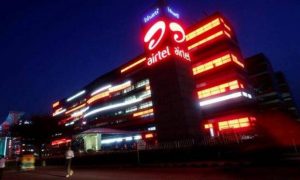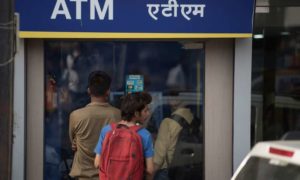The ARPU levels remain lower in comparison to historic trends, despite consumers getting much more value in terms of unlimited voice.
Struggling telecom operator Vodafone Idea Ltd says the industry needs to raise mobile tariffs at regular intervals as the sector still operates at unsustainably low prices and revisions will allow it to generate reasonable returns and support future investments.
The joint venture of Aditya Birla Group and Vodafone Group, which last year got a fresh lifeline after the government extended a relief package to the sector, said per user revenue remains lower than historic trends.
All three private telecom operators — Reliance Jio, Bharti Airtel and Vodafone-Idea Ltd (VIL) — last year raised charges for data, arresting average revenue per user (ARPU) declines.
Despite this, “the industry still operates on unsustainably low tariffs”, VIL said in its latest annual report.
“India continues to have the lowest tariffs globally, while the proliferation of unlimited data bundles have led to India having one of the highest data usage (per subscriber) in the world,” it said.
The ARPU levels remain lower in comparison to historic trends, despite consumers getting much more value in terms of unlimited voice and daily data allowances, compared to five years ago.
“The company thus believes that the industry will have to further raise tariffs at regular intervals, which is essential for operators to generate reasonable returns on their capital employed and support future investments, including new technologies,” the firm said.
VIL had 24.38 crore subscribers as of March 31, 2022, of which 11.81 crore were 4G users.
The company said while the Supreme Court allowed past statutory dues to be paid in 10 years, the government announced a relief package for the industry in September 2021 to address liquidity challenges facing the telecom sector.
Post this, “the Company has started to witness improvement in various operating KPIs including leading the league tables of Voice and Data experiences it offers to the customers. The pace of subscriber base decline has also reduced to some extent,” it noted.
The firm is currently in discussion with lenders and investors to get the requisite equity and/or debt funding which will enable it to restart the capex cycle and move towards the growth journey in line with its long-term strategic intent.
In the recently concluded spectrum auctions, the company acquired 5G spectrum in its priority circles covering 98 per cent of its revenue base, which will strengthen its competitive position.
“The consolidation of the industry to three large private operators and one government operator positions the surviving operators well to benefit from the growth opportunities on the back of India’s digitalization trend,” it said.
The overall tele-density for India as of March 2022 stood at 83.1 per cent, suggesting there is still a proportion of population which is yet to start using mobility services.
This holds true especially for rural areas where tele-density is still low at 57.9 per cent, which remains a significant opportunity for the Indian telecom operators.
“The company is taking appropriate steps to grow its revenues further and thus reduce losses/earn profits by following a well-defined strategy,” the annual report said.
VIL said its priority remains on driving ARPU improvement.
“During the year, company has taken several tariff interventions specifically, effective November 25, 2021, company increased the prepaid tariffs across all price points including unlimited plans as well as combo vouchers. All these initiatives are ARPU accretive, benefits of which are reflected in ARPU improvement from Rs 107 in Q4 FY21 to Rs 124 in Q2FY22.”
“While all these tariff interventions are steps in the right directions and will help in improving the ARPU, however such changes are not material enough to solve the structural issue that the industry is facing,” it said.
Also Read : For First Time Ever, Top Body Of Scientists (CSIR) Gets Woman Boss
Tariff hike remains critical to revive the sector and pricing structure has to change where operators have the ability to charge customers for incremental usage, the company added. India has amongst the lowest ARPUs in the world despite having one of the highest data usage per subscriber.
The company said it believes the market will be able to absorb further tariff hikes, which is essential to operators to generate reasonable returns on their capital employed and support future investments.
“While tariff hike remains critical to improve the overall industry health, company has undertaken several market initiatives to improve ARPU…,” it said.
“As a part of customer excellence drive, company continues to aggressively focus on digitalisation of customer servicing as well acquisition across all touch points with a clear focus towards shift to digital.”
The telco now has digital acquisition across major cities in India, for both prepaid and postpaid customers, including same day doorstep delivery and digital KYC processes, serviced through its dedicated delivery partners as well as own stores.





































